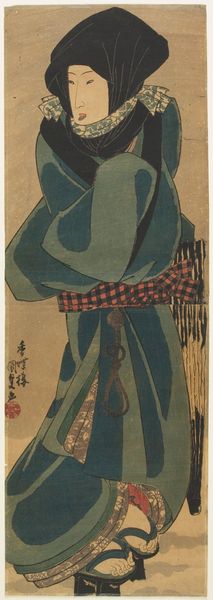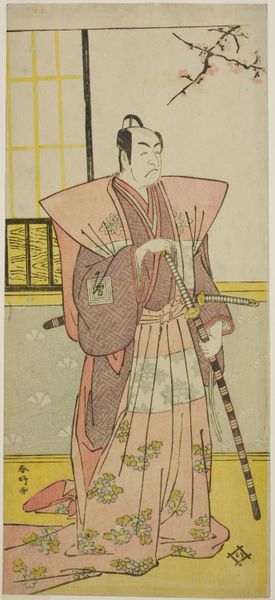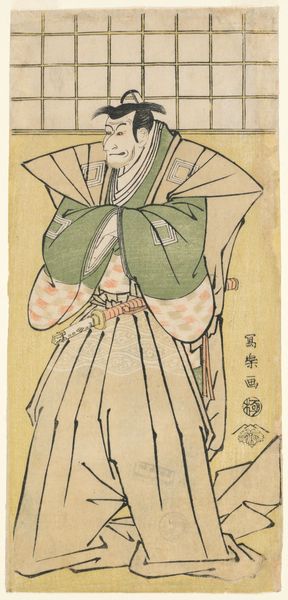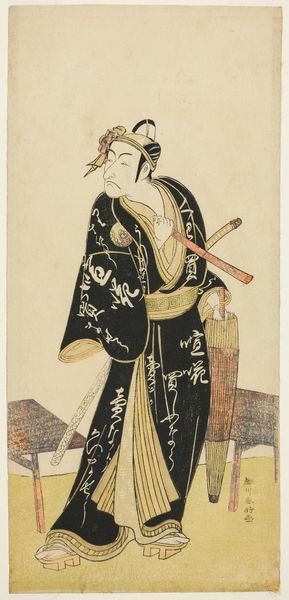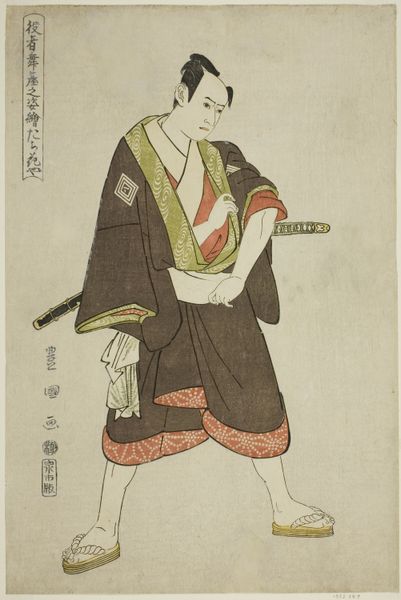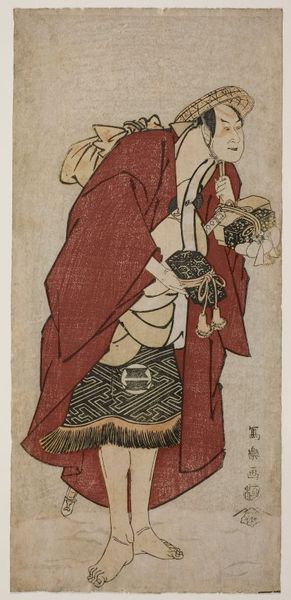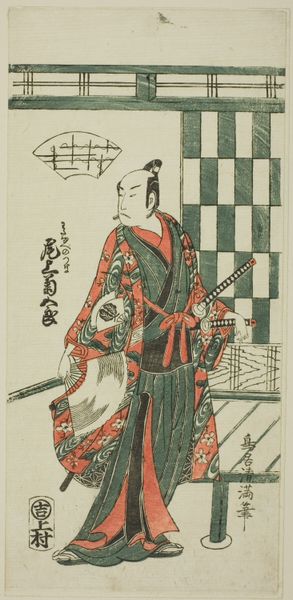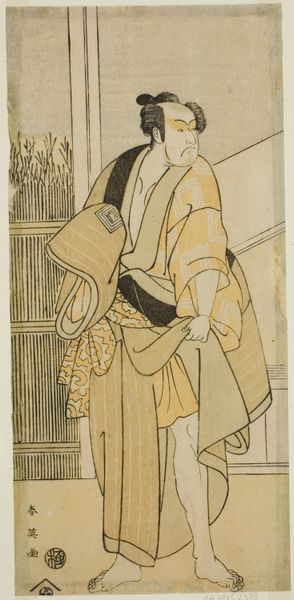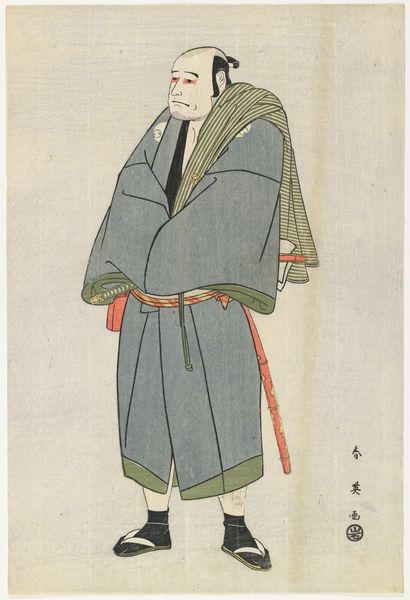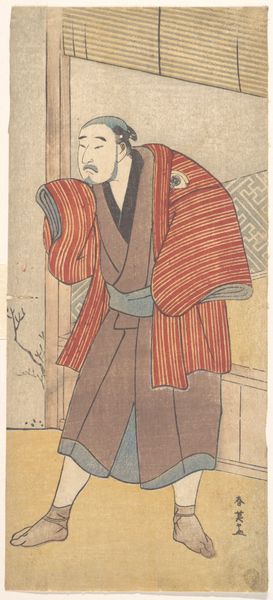
The Actor Matsumoto Koshiro IV as the Boatman Minagawa Shin'emon of Reisengasaki in Kamakura, Actually Hata Rokurozaemon Tokiyoshi (Yondai-me Matsumoto Koshiro no Kamakura Reizengasaki no sendo Minagawa Shin'emon, jitsuwa Hata Rokurozaemon) Possibly 1794 - 1796
0:00
0:00
print, woodblock-print
#
portrait
# print
#
asian-art
#
ukiyo-e
#
japan
#
figuration
#
woodblock-print
#
japanese
Dimensions: 31.6 × 13.8 cm
Copyright: Public Domain
Editor: Here we have "The Actor Matsumoto Koshiro IV as the Boatman Minagawa Shin'emon of Reisengasaki in Kamakura, Actually Hata Rokurozaemon Tokiyoshi" by Tōshūsai Sharaku, a woodblock print dating to the mid-1790s. There's something about the directness of his gaze that is compelling. What strikes you most about this work? Curator: The print vibrates with tension. Sharaku isn't simply depicting an actor; he’s exposing the constructed nature of identity itself. Consider the actor portraying one role *within* another, layered like nested dolls. How does this reflect on the societal pressures and performance of self during the Edo period? Editor: That's fascinating! The performative aspect of identity... so the subject is already inhabiting two roles at once. What do you mean by "societal pressures?" Curator: The Edo period had very strict social hierarchies and expectations. Think about the role of actors, often marginalized despite their popularity. By showcasing the actor *in* a role, Sharaku critiques the very notion of fixed identity. Isn’t this tension between public performance and private self relevant even today? The actor's somewhat defiant look also hints at hidden resistance. What social commentaries might Sharaku have embedded within the image? Editor: So, it is like Sharaku questions not just who the actor *is*, but the entire system that forces them (and perhaps all of us) into predefined boxes. I never considered Ukiyo-e in this light, as challenging social norms! Curator: Exactly. Ukiyo-e wasn't just about pretty faces; it was a lens through which to examine social structures, power, and the individual's place within it. This particular piece speaks volumes about the fluidity of identity, then and now. Editor: This perspective really enriches my understanding. It shows how art from the past can still spark meaningful dialogue about contemporary social issues.
Comments
No comments
Be the first to comment and join the conversation on the ultimate creative platform.
